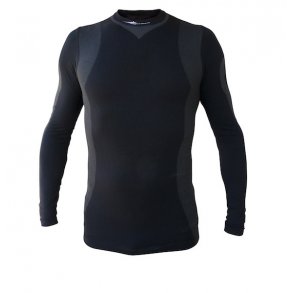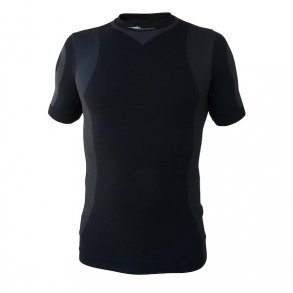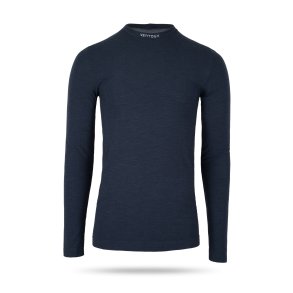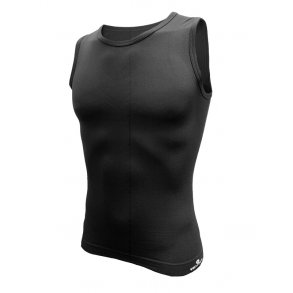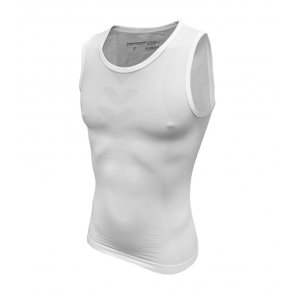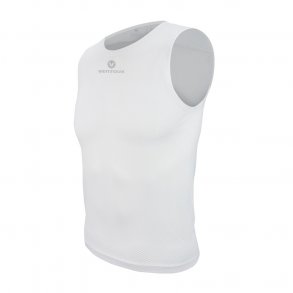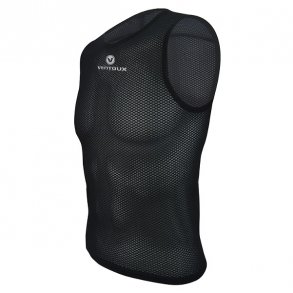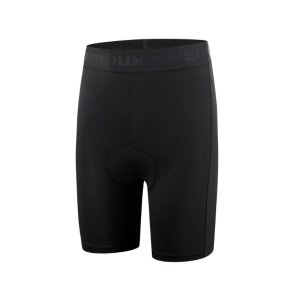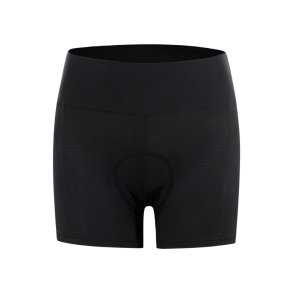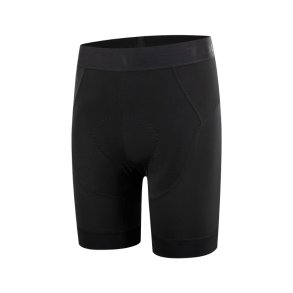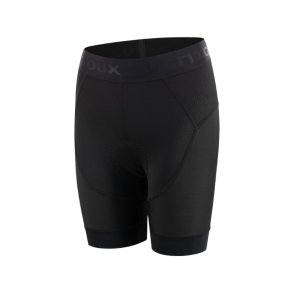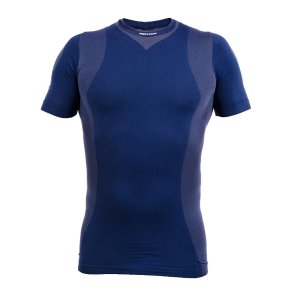Cycling base layers
Sweat-wicking sports underwear is practical clothing all year round, and not just when it's cold. When it's hot, a sweat undershirt of the right quality will keep the body better free of moisture and thus contribute to better climate regulation - even during intensive training and competition.
One of the classics in Ventoux's range is the seamless Layer One sweat shirts, which have become popular among both cycling and running enthusiasts for their unique fit and functional properties. They are produced in northern Italy on high-tech knitting machines, and the quality is in a special class. Layer One is available in both a short- and long-sleeved version as well as a Light sleeveless version. Ventoux Layer One has been reviewed and tested several times - read e.g. reviews in Cykelmagasinet and on Cykelstart.dk.
Ventoux Layer One base layer, short sleeves, navy
5007
Technical base layer. Seamless. Top quality. Made in Italy
EUR 27.00
(incl. VAT)Why use a cycling base layer?
A sports base layer - is designed to wick moisture (sweat) away from the body and help regulate body temperature. It can help avoid overheating during more intense training sessions or competition, which can improve performance and prevent cooling when pace and intensity drop again.
Sweat can cause irritation and discomfort when it gets trapped between the body and the cycling jersey. Wearing a sweat undershirt can help wick sweat away from the body and keep the skin dry, increasing comfort during longer rides or for exercise.
Then base layers also have the obvious advantage of preventing bad odours: Sweat and bacteria can cause bad odours, especially when trapped in dense and wet fabrics. Sweat undershirts are often made from technical materials that can resist bacterial growth and retain freshness, even after repeated use.
Choose the right base layer
There are several factors that should be taken into account when choosing the perfect sports base layer:
1. The type of textile is probably the most important factor for whether the base layer is actually able to conduct moisture away from the body and ensure the correct climate regulation. One of the most used textiles for cycling base layers is polypropylene. This is for a good reason, as polypropylene has a unique ability to transport sweat away from the body and is skin-friendly at the same time. Polypropylene is an art material, but of the more environmentally friendly kind, as it is easy to recycle.
Certain textiles have the effect that they hold onto and/or cannot get rid of moisture. This applies, among other things, to Nylon and Cotton, which are not suitable for sports underwear.
In recent years, the use of Merino wool and Bamboo has gained ground in sports underwear, and these natural materials, possibly in a mix with other materials, have proven to be particularly effective in terms of moisture transport, odor reduction and climate regulation. And natural materials are typically more sustainable and climate-friendly than oil-based artificial materials in particular. The disadvantage is that base layers with Merino wool in particular are typically at a higher price level.
2. The fit. A base layer must fit (completely) close to the body - almost like an extra layer of skin - to work as intended! For reasons of comfort, a base layer must therefore also be maximally stretchable. As a rule, a certain percentage of Elastane (or equivalent) is needed to achieve the necessary textile elasticity. The body-hugging fit is of course also necessary because you usually wear it under a cycling jersey or cycling jacket.
3. Design. Base layers are used as an inner layer and taking into account the body contact, there should ideally be as little as possible that could bother, e.g. through friction. Base layers produced in a seamless design, i.e. without annoying seams, is best suited here. It requires a special technology and some (expensive) machines to produce seamlessly, so it's worth looking carefully.
Base layers for summer and winter
In the summer, you need a base layer in a thin and comfortable material, which at the same time does its primary job, namely to quickly and efficiently conduct moisture and sweat away from the body.
It may seem a little strange to wear a base layer under the cycling jersey when the temperature is high. But once you have experienced the benefits of the more effective climate regulation in high heat, you will not want to do without the sleeveless base layer.
Ventoux Layer one light base layer without sleeves, is designed for warm conditions. It is made in an extra thin technical textile, with a deeper neckline and a longer back. It has features that are especially intended for cyclists (extended back piece), but also suitable for other sports such as e.g. race.
In the winter months, the most important function of a sports base layer is to keep the upper body warm. A damp body will quickly become cold if you e.g. stands still or the intensity decreases.
The long-sleeved base layers are the most common in the winter. Typically under a jacket, long-sleeved cycling jersey or (spring and autumn) under a wind vest.
The colder the weather, the greater the need for your sports base layer to also help keep you sufficiently warm. Both shirt material and thickness play a role here, and a base layer shirt with e.g. a high content of warm Merino wool really comes into its own here.
Ventoux base layers for all purposes
For many years, Ventoux has designed and produced base layers for both summer, winter and year-round use via factories in Italy and Eastern Europe. We choose the best and most comfortable textile compositions with maximum elasticity. The base layers are manufactured as unisex models and can be used by both men and women.
Few people can make do with a single sweat undershirt in the closet, which is why you can always find offers for the purchase of 2 or more base layers at Ventouxbike.dk. You can typically choose 2-3 pcs. of your favorite base layer or you can get a mix where you e.g. get a short sleeved and a long sleeved base layers as a set.









